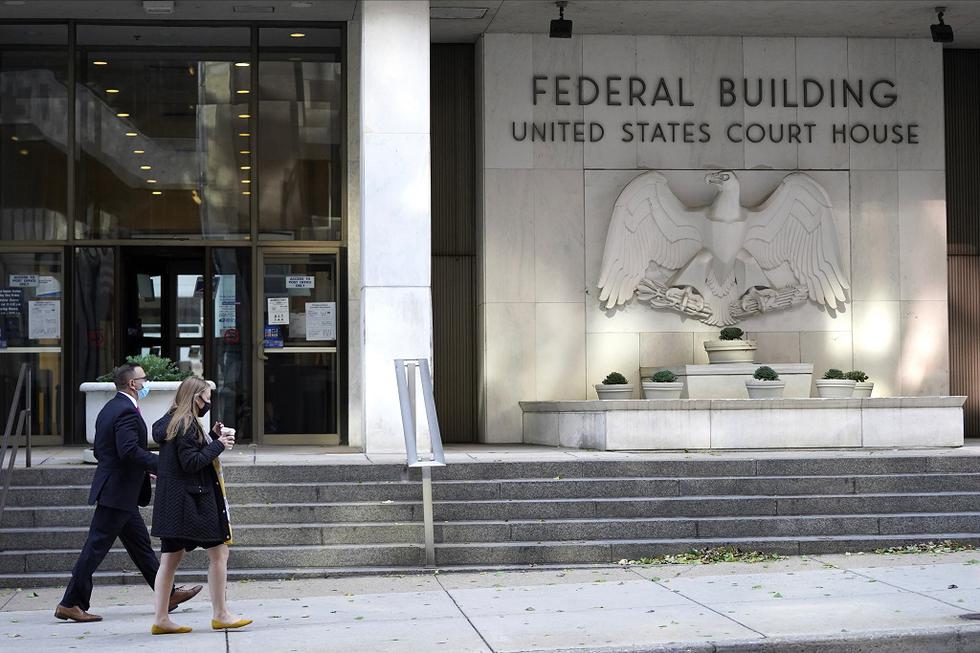
The battle lines in the over policy and regulations are being redrawn in anticipation of former President Donald Trump’s second administration. On Monday, the American Civil Liberties Union Foundation of Southern California in Los Angeles seeking records from “ICE Air,” the Immigration and Customs Enforcement agency’s program for flying noncitizens out of the country. The move is meant to gather information in preparation for litigation challenging Trump’s program.
Last week, Democratic Govs. JB Pritzker of Illinois and Jared Polis of Colorado a national coalition of governors who will work to protect the country against what they described as the “dangers of authoritarianism and the undermining of democratic institutions,” particularly state courts. Polis Colorado Public Radio that the coalition is bipartisan, while noting that the group “certainly would have some concerns with the incoming administration.
” The Colorado governor added that the U.S. is undergoing a generational shift, away from the dynamics that underlay the civil rights movement of the 1960s and beyond—when the federal government was the principal party protecting the rights of minorities against discriminatory state-level policies.
“Now, the concern is very much flipped on its head,” Polis said. “And absolutely that calls on states to play a greater role.” To be sure, there are enough moving parts here—like the fact that political actors are constantly reacting to each other’s strategic advantages, let alone the actual decisions and actions of their counterparts—to make the business of predictions quite complex.
What’s more, there are potentially unprecedented factors that could upend our expectations: How will, say, environmental lawsuits work in the future, for example, if the Trump administration announces plans to move the EPA away from Washington, D.C.? Or what if the administration in fact begins enforcing dormant morality and obscenity laws like the Comstock Act of 1873—or chooses to prosecute Texan citizens within the U.
S. Court of Appeals for the Fifth Circuit, which is even more conservative than the U.S.
Supreme Court? In short, the legal landscape in the future is highly uncertain. Still, there are some fundamental changes that we can anticipate with some confidence. The shift to a Republican administration, and former President Trump’s record of breaking norms and pushing the boundaries of the law, suggest both that we will see an uptick in litigation against the government in the next four years, and that the landscape of that litigation will change significantly.
Lawsuits challenging nationwide policies during Democratic President Joe Biden’s administration were filed by business groups, a of interlocking conservative legal organizations, and (predictably) Republican states’ attorneys general. And an outsize portion of those lawsuits were filed in Texas, where the federal appeals court is dominated by a supermajority of Republican appointees, and also has an of court divisions with just one or a handful of judges—allowing parties to a preferred jurist. Those trends will almost certainly fluctuate during the next four years.
“The dynamic where [Texas Attorney General] Ken Paxton wakes up, goes to work, and files a new lawsuit against the federal government is going to change,” said David Coale, an appeals lawyer at Lynn Pinker Hurst & Schwegmann in Dallas. “It’s going to be states like New York and California suing the federal government now, and I doubt they’ll be very interested in coming down here to file their cases.” , between 2001 and 2016, roughly half of nationwide injunctions—judicial orders that block a policy throughout the country, rather than with regard to the particular plaintiffs in a case—came from judges appointed by the opposite party from the administration whose actions were blocked, according to in April by the .
Those numbers shot up to 92 percent during Trump’s presidency—a spike that may “reflect judicial responsiveness to the unprecedented degree to which President Trump tested the limits of presidential power.” A similar response can be expected in the next four years. Much of that litigation against the incoming Trump administration will be brought by public-interest groups and (just as predictably) Democratic-led states.
The cases will probably be more dispersed across the country than the litigation against the Biden administration, due to a number of factors, including that GOP officials and conservative groups have proven more willing to stretch certain judicial norms about proper forums and jurisdiction, as research by the legal scholar Stephen Vladeck and others . (Consider, for example, that nationwide injunction against Biden—whose administration was not nearly so eager to stretch the bounds of presidential power as Trump—was issued by appointees from the opposite party.) Still, we can anticipate that a good number of those challenges will be concentrated in the blue states and federal circuits dominated by liberal appointees—most likely the U.
S. Courts of Appeals for the District of Columbia Circuit, the Fourth Circuit, as well as the Ninth Circuit, which covers the most populous state, California, and also hears more immigration appeals than any other circuit. The First Circuit, which is the smallest by number of active judges, could also play an outsize role in the coming years: of the active judges in that circuit, which covers Puerto Rico and the New England states, were appointed by Democrats.
Moreover, Massachusetts elected the progressive Democrat Andrea Campbell as attorney general last year—a position from which her predecessor (current Gov. Maura Healey) than 100 lawsuits challenging the policies of the first Trump administration. Arthur Hellman, a federal courts scholar and emeritus professor at the University of Pittsburgh School of Law, has noted in his scholarship that there is some distinction between political ideology and judicial ideology.
The point is important, Hellman told me, because it offers another explanation for patterns that suggest a judge is ruling according to the preferences of the political party that nominated them: Many are simply viewing the world—and the law—through the lens of the ideological predispositions that the party considered when appointing them , rather than simply behaving as partisan political actors. Still, forum shopping—filing suits based on the plaintiff’s odds of getting Democratic, or Republican, appointees assigned to the case—persists largely because judicial ideology tends to overlap and correlate with political ideology. (To be clear, the term “judge shopping” is generally used to refer to a more recent and somewhat distinct practice that is much more prevalent among conservative litigants: seeking to steer a case before a particular judge, or couple of judges, rather than simply playing the odds based on the circuit majorities.
) “Everyone knows perfectly well that conservative judges sometimes vote for liberal outcomes, and vice versa, but if you put yourself in the shoes of a litigator, what you’re doing is looking for the odds,” Hellman said. In other words, any good litigator considers their clients’ chances of landing a judge appointed by one or the other party at the district or lower-court level; at the appeals level, which generally involves three-judge panels; and potentially at the en banc level, where cases are generally heard by all the active judges on a circuit, as well as any senior judges who may have heard the case before appeal. (So-called senior judges are semi-retired officials who can still hear disputes, but handle a reduced caseload.
) And, as of today, the makeup of the four circuits mentioned above makes those the most favorable to the Democratic-led states and left-leaning groups that will be seeking to block the Trump administration’s policies. The D.C.
Circuit, for starters, covers the nation’s capital, and so it has primary jurisdiction and plenty of experience with cases involving the regulations and administrative law that comes from the federal agencies headquartered in Washington. (You can also sue where the enforcement or violation of rights happens.) Perhaps more importantly, 7 of the 11 active district court judges within that circuit were appointed by Democratic presidents, roughly 64 percent; and Democratic appointees also make up a 7-4 majority of active judges at the appellate level, according to the Circuit Court’s website and Balls and Strikes’ “Circuit Status” tracker.
Additionally, the D.C. Circuit is liberal circuit in the country as of 2022, according to the “ ” scores, which attempt to measure the relative conservatism and liberalism of each circuit.
The Fourth Circuit, which covers Maryland, Virginia, and the Carolinas, has a 57 percent Democratic-appointed majority among active judges on its lower courts, and Democratic appointees outnumber their counterparts 9-6 at the appeals level. “The Fourth is another Circuit that is going to look very attractive” to litigants challenging federal policy, Hellman said, adding that more of the liberal judges within that circuit are located in Maryland and Virginia. “The liberal majority in the Fourth Circuit has also been pretty open to taking cases en banc, and so, in my view, that’s actually potentially the most liberal court of appeals in the country today.
” The Ninth, covering the Western states and several U.S. territories, is generally thought of as a liberal bastion.
But, importantly, that court’s historic and long-standing Democratic-appointee majority is waning; the Ninth Circuit also has entirely unique rules for en banc panels—due to its size—that limit the degree to which litigants can game out their odds of getting a liberal-majority panel. (The Ninth Circuit uses a random assignment system for en banc review, rather than having those cases heard by all active judges.) Currently, nearly 80 percent of the dozens of judges on the district courts in that circuit were appointed by Democrats; and Democratic appointees have a 16-13 majority at the appellate level.
“If you’re in the shoes of a litigant or a blue-state attorney general, the Ninth Circuit is probably somewhat less attractive today than during the first Trump administration,” Hellman said. “There are much greater odds of getting a conservative-majority three-judge panel on appeal and on an en banc court.” In 2020, for example, an en banc panel of Ninth Circuit judges along partisan lines—seven Republican appointees in the majority, and four Democratic nominees in dissent—in a ruling that lifted injunctions against a Trump administration rule denying federal funding to clinics that refer women for abortions.
The First Circuit, which has just six seats for appellate judges, is currently 100 percent composed of Democratic picks. And there’s one Democratic nominee who would fill the last remaining seat. That circuit’s lower level also has a 72 percent Democratic-appointee majority, which means that attorneys general in that region who might be inclined to oppose Trump’s policies—likely Campbell, in Massachusetts, and Rhode Island Attorney General Peter Neronha—have a distinct advantage at every level, save for the Supreme Court.
We can expect that litigants and attorneys generals in those circuits will be much bolder in challenging the incoming administration’s actions, and that those judges will get the first or second cracks at deciding a number of important policy questions. There are also, of course, the aforementioned wild cards that could affect the litigation landscape, like the potential of a federal agency relocating, which would establish primary jurisdiction elsewhere, or the potential that conservative groups and the federal government will take advantage of Trump nominees’ patterns of norm-breaking in order to continue to steer litigation into certain circuits and before certain judges. “Strangely enough, the U.
S. might try to get cases moved to the Fifth—they’d probably rather be there than D.C.
, and if venue rules continue to be favorable that could happen,” said Coale, the Texas appellate practitioner. Things could also get interesting in the D.C.
Circuit, which is the circuit that is most frequently overturned by the Supreme Court, and where former Trump administration official and appointee Judge Neomi Rao currently sits. Rao is another one of Trump’s rumored potential picks for the Supreme Court. Of course, Democrats and left-leaning groups also have to contend with the fact that they are facing a rather unfavorable 6-3 Republican-appointed Supreme Court majority, in contrast to Biden opponents, who had the relative advantage of that conservative supermajority.
That might make some attorneys general and would-be litigants a bit wary about bringing certain suits, which might end up establishing a precedent that cuts against their interests. In any event—and there will be many, unforeseeable events—we can certainly expect that a number of attorneys general, and many private groups, will be suing the Trump administration. And the center of gravity in the federal judiciary will probably shift, away from the Fifth Circuit, though not entirely, and more toward D.
C., Maryland, Virginia, and other federal courts dominated by liberal appointees..














